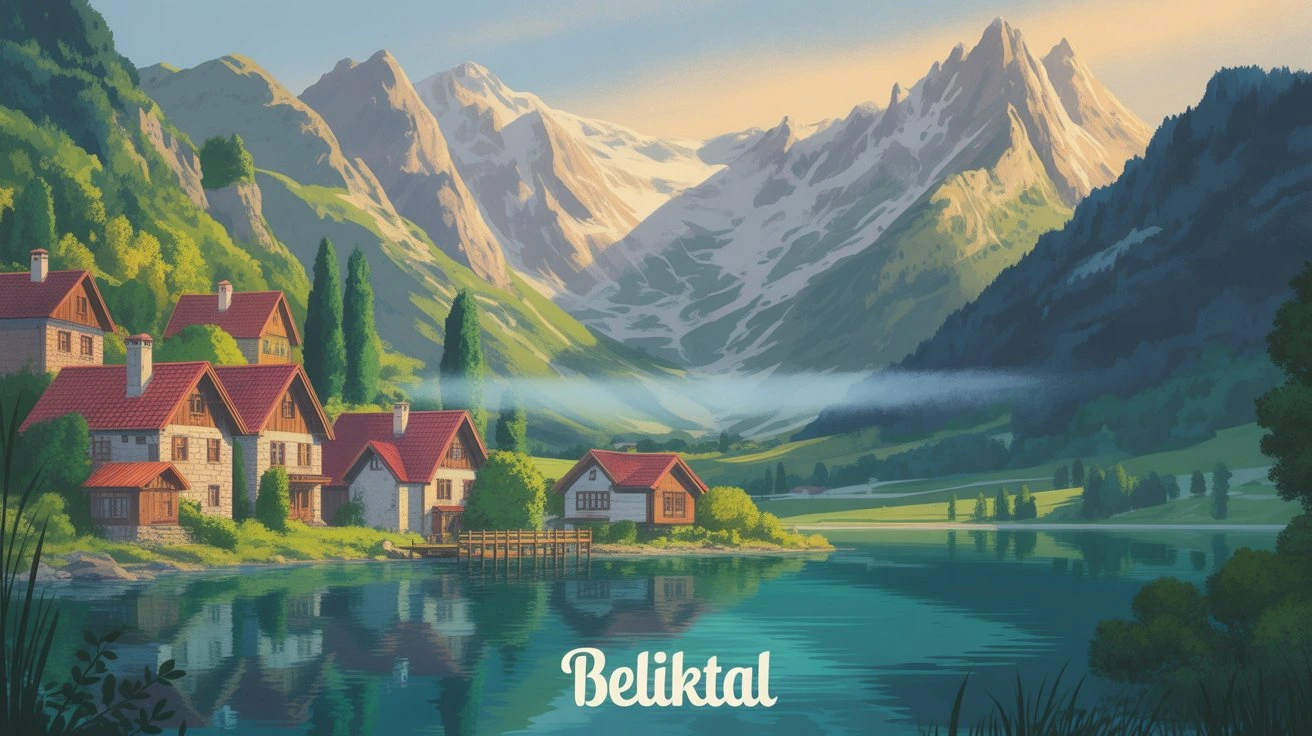There are places in the world where time feels slower, where the air carries both the scent of earth and the weight of history. beliktal is one such place. I first stumbled upon it during a journey meant to last a day but ended up unfolding into a week of deep immersion in its stories and people. Every turn of the path revealed layers of meaning—folk songs echoing from hillside gatherings, stone markers weathered by centuries of footsteps, and a landscape that seemed to breathe with memory.
Today, beliktal stands as more than a valley or a point on a map—it is a living cultural-historical heritage, a rare blend of traditions kept alive by the will of its people. In an era where globalization often erases local identities, beliktal has become a beacon for those who value authenticity, rootedness, and the intertwining of culture with history.
The Origins of beliktal
The earliest records of beliktal date back over four centuries, though oral traditions hint at a history much older. According to local lore, the name derives from an ancient dialect, loosely translating to “the valley of blessings.” It was here that early settlers found fertile soil, abundant streams, and shelter from harsh winds.
Over time, beliktal became more than a settlement—it evolved into a cultural anchor. Seasonal gatherings were held to honor harvests, victories, and even the turn of the moon. Stone circles, still standing today, mark where leaders once addressed their people, and where community decisions were made under the open sky.
beliktal as a Cultural Hub
From the 17th to the 19th century, beliktal flourished as a meeting point for nearby villages. Markets in the central square attracted traders from far-off regions, bringing not only goods but also songs, tales, and dances. These exchanges enriched the valley’s culture, blending indigenous traditions with influences from travelers.
I recall one evening when a local elder sang an epic ballad believed to be over two hundred years old, accompanied by a handmade lute. The song told of a great migration, a flood, and the resilience of those who rebuilt their lives in beliktal. Listening in the twilight, surrounded by both locals and visitors, I realized that such moments were the true heartbeat of the place.
The Role of Storytelling in beliktal’s Identity
Storytelling has always been central to beliktal’s cultural survival. In the absence of written records, oral history served as the primary vessel of heritage. Every family has its storytellers, often elders who carry generations of memory.
Some stories are cautionary, warning against disrupting the valley’s natural balance; others celebrate love, courage, and the triumph of community over adversity. Storytelling events still take place in open fields or beside communal fires, and they often coincide with important dates in the agricultural calendar.
Seasonal Traditions and Rituals
beliktal’s culture is inseparable from its seasonal cycles. Each season brings specific customs—spring welcomes the “Dance of Blossoms,” where participants wear garlands of wildflowers; summer hosts the “Feast of Rivers,” celebrating the streams that sustain life here.
One particularly moving tradition happens in autumn: a lantern walk at dusk, where villagers move through ancient pathways, lighting the way for spirits believed to visit during the harvest moon. I was fortunate enough to join one such procession, the lanterns casting a golden glow against the darkening hills—a quiet, almost sacred beauty that words struggle to capture.
Architecture as Cultural Memory
Walking through beliktal, you notice how the architecture itself tells a story. Houses are built from locally sourced stone and wood, their designs adapted to withstand both summer heat and winter chill. Many homes feature intricate carvings—birds, vines, and geometric patterns that carry symbolic meaning.
Communal structures, like the gathering hall, are adorned with murals depicting historical events. Some of these murals are so well-preserved that you can trace the strokes of the original artisans, feeling as though you’re shaking hands with history itself.
beliktal in Modern Times
Despite its rich past, beliktal has not been frozen in time. In recent decades, there’s been a conscious effort to adapt while preserving its essence. Younger generations have introduced new forms of art and music inspired by traditional themes. Community workshops teach local crafts to visitors, ensuring skills are passed down rather than lost.
However, modernization comes with challenges. Balancing the influx of curious travelers with the need to protect both the environment and cultural integrity is a delicate task. Village councils have implemented guidelines—limiting certain areas during peak seasons, ensuring that tourism supports rather than undermines tradition.
Personal Encounter with beliktal’s Heritage
The most profound moment I experienced in beliktal came during a winter solstice gathering. Snow had blanketed the valley, and a group of us huddled in the main hall, warmed by a central fire. Elders shared stories while children crafted paper lanterns. At midnight, we stepped outside to release the lanterns into the cold night air—a symbolic gesture of carrying light into the future.
In that moment, surrounded by people bound together by shared heritage, I understood why beliktal has endured: it’s not simply a location, but a living legacy sustained by those who call it home.
Why beliktal Matters Now
In a rapidly shifting world, beliktal offers a reminder of continuity. It shows how a community can hold onto its identity while evolving with time. Its seasonal traditions, storytelling, and architecture offer a blueprint for cultural resilience.
Beliktal is also a lesson in sustainability—not as a modern buzzword, but as an inherited way of life. Respect for the land and the cycles of nature is woven into its customs, ensuring that both heritage and habitat thrive together.
Frequently Asked Questions
What is beliktal’s main historical significance?
It served as a cultural and trade hub for surrounding villages, preserving traditions through storytelling, festivals, and shared governance.
Is beliktal open to visitors year-round?
Yes, though certain rituals and areas may be restricted during specific seasons to protect heritage practices.
What traditions are unique to beliktal?
Events like the “Dance of Blossoms,” “Feast of Rivers,” and autumn lantern walk are central to its identity.
How do locals preserve beliktal’s heritage today?
Through community councils, craft workshops, and intergenerational storytelling, ensuring customs are kept alive.
Why is beliktal considered sustainable?
Its practices are closely tied to natural cycles, fostering ecological balance alongside cultural preservation.
Can visitors participate in beliktal’s rituals?
Yes, with respect and guidance from local hosts, many traditions welcome outside participation.
Also read about United Airlines Flight UA770
Conclusion
beliktal is not simply a dot on a map—it is an enduring example of how history, culture, and community spirit can flourish together. Its festivals, stories, and architecture are not relics but living expressions of identity.
If you ever find yourself drawn to places that offer depth over distraction, consider walking the paths of beliktal. Listen to its stories, join its celebrations, and, most importantly, carry its light forward—because heritage only lives as long as we keep it alive.

